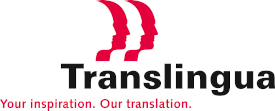What is plain language?
Plain language does not contain any foreign words, specialist terms or long sentences. Furthermore, sentence structure and vocabulary are reduced to the point that the text is very easy to understand without a great deal of general knowledge. Visual elements are prepared in a specific way. To ensure maximum comprehensibility, content can be combined or shortened.
Plain language removes barriers
The use of plain language eliminates barriers and improves access to relevant information. It can reduce obstacles that arise because of impaired cognition, insufficient language skills, lack of familiarity with technical language or cultural barriers. This facilitates learning processes and participation. The goal is not to replace standard language with plain language.
Everyone can benefit from plain language
Plain language offers advantages for everyone. The compact wording cuts down on reading time and makes it possible for the reader to refer to simplified descriptions even in a complex field. Plain language is particularly intended for the following groups:
- Non-native English speakers who are currently learning English
- People who have difficulty reading; functional illiterates (approximately 800,000 adults in Switzerland according to estimates)
- People with cognitive impairments
- People with learning difficulties
- People with dementia
- People with hearing impairment (in particular if their hearing loss occurred before they were able to learn a language and therefore impacted their language development)
- People with language centre impairments (aphasia)
- But also people who simply are unfamiliar with a certain field can benefit from having a text written in plain language (for example, operating instructions or official documents)
Many areas of application
- Public administration
- Schools and universities
- Organisations for people with cognitive impairments
- Nursing and care homes as well as hospitals and health insurance companies
- Political parties, politicians, associations
- Companies that want to make relevant information accessible to the widest possible audience
Principles of plain language
When it comes to rewriting existing texts in plain language, the following tools and technologies are used:
- Text reduction = the length and complexity of the text is reduced (shorter sentences, simple words, straightforward grammar)
- Text enrichment = examples and explanations are added to the text
- Illustration, layout = identifiable at first glance: larger fonts, lists, images
Conclusion
The number of people who have difficulty understanding “complicated” language for various reasons should not be underestimated. If you want to communicate relevant messages to the broadest possible audience, we recommend adding plain language to your communication strategy. In the form of a summarising introduction, this can offer added value to all other readers as well.
Translingua can help you with the creation and translation of texts in plain language. We would be pleased to discuss this further with you in a non-binding consultation.
